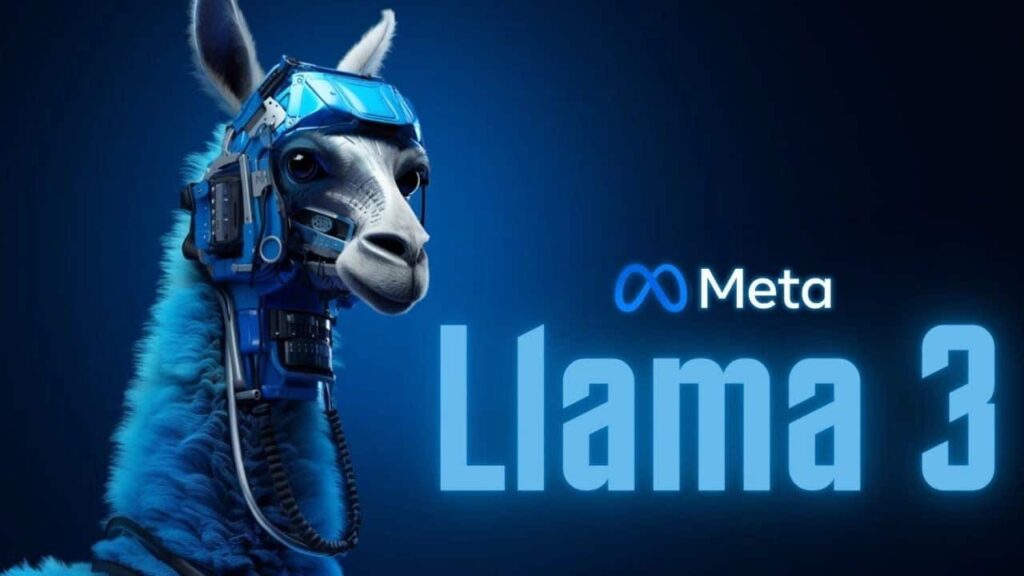In the ever-evolving world of artificial intelligence, Meta has just made a groundbreaking move with the release of its latest AI model, LLaMA 3. Promising to outperform the likes of ChatGPT, this open-source marvel is not just a step forward but a leap into the future of AI. With a firm commitment to openness and innovation, Meta’s LLaMA 3 is set to redefine how we perceive and interact with AI technologies.
The Rise of LLaMA 3: A New Era of Open-Source AI
Meta’s announcement of LLaMA 3 has sent ripples across the AI community. LLaMA 3 stands for “Large Language Model Meta AI” and is the third iteration in the series, promising enhanced capabilities and performance over its predecessors. This new model is part of Meta’s ambitious vision to advance AI technology while maintaining a strong focus on openness and collaboration.
Unlike proprietary AI models, LLaMA 3 is open source, allowing researchers, developers, and enthusiasts worldwide to access, modify, and improve it. This open-source approach aligns with Meta’s belief that transparency and collaboration are key to accelerating AI advancements and ensuring that AI technologies are used for the greater good.
Meta CEO Mark Zuckerberg expressed his excitement about LLaMA 3, stating, “We believe open-source AI is the path forward. LLaMA 3 is not just a technological achievement but a testament to our commitment to openness and innovation.”
LLaMA 3 vs. ChatGPT: What Sets It Apart?
LLaMA 3 is being touted as a formidable contender against established AI models like OpenAI’s ChatGPT. While ChatGPT has gained popularity for its conversational abilities, LLaMA 3 is poised to take the AI experience to new heights. Here are some key features that set LLaMA 3 apart:
- Enhanced Language Understanding: LLaMA 3 boasts improved language comprehension, allowing it to understand context and nuances more effectively. This results in more natural and coherent conversations with users.
- Multimodal Capabilities: Unlike ChatGPT, which primarily focuses on text-based interactions, LLaMA 3 can process and generate text, images, and even audio. This multimodal approach opens up new possibilities for creative and interactive applications.
- Scalability and Efficiency: LLaMA 3 is designed to be highly scalable and efficient, making it suitable for various applications, from small-scale projects to large-scale deployments. Its architecture allows for faster processing and reduced resource consumption, making it a practical choice for developers.
- Customization and Adaptability: As an open-source model, LLaMA 3 offers unparalleled customization options. Developers can fine-tune and adapt the model to suit specific needs, leading to tailored AI solutions that cater to diverse industries and applications.
Open Source: The Key to AI’s Future
Meta’s decision to make LLaMA 3 open source is a strategic move that reflects a growing trend in the AI industry. Open-source AI models are gaining traction for several compelling reasons:
- Transparency and Trust: Open-source AI models allow researchers and developers to inspect the underlying code, ensuring transparency and building trust among users. This openness is crucial in addressing concerns about bias, fairness, and ethical considerations in AI.
- Collaborative Innovation: Open-source projects foster collaboration among a global community of researchers, developers, and enthusiasts. This collaborative approach accelerates innovation and leads to rapid advancements in AI technology.
- Accessibility and Inclusivity: By making AI models accessible to a broader audience, open-source initiatives democratize AI technology, enabling individuals and organizations worldwide to benefit from AI advancements.
- Cost-Effective Solutions: Open-source AI models eliminate the need for expensive licensing fees, making AI technology more affordable for startups, small businesses, and research institutions.
The Road Ahead: LLaMA 3’s Impact on AI
With LLaMA 3, Meta is not only challenging the status quo but also paving the way for a future where AI is more accessible, ethical, and impactful. The open-source nature of LLaMA 3 empowers developers to create innovative applications across various domains, from healthcare and education to entertainment and beyond.
As AI continues to play an increasingly significant role in our lives, Meta’s commitment to openness and collaboration sets a positive precedent for the industry. LLaMA 3 is not just an AI model; it is a testament to the power of collective innovation and a glimpse into the limitless possibilities of AI-driven solutions.
In conclusion, Meta’s LLaMA 3 is poised to revolutionize the AI landscape with its advanced capabilities and open-source nature. As it outshines ChatGPT and other competitors, LLaMA 3 promises to usher in a new era of AI innovation, where the possibilities are boundless, and the future is brighter than ever.
REFERENCES:
[Meta]

